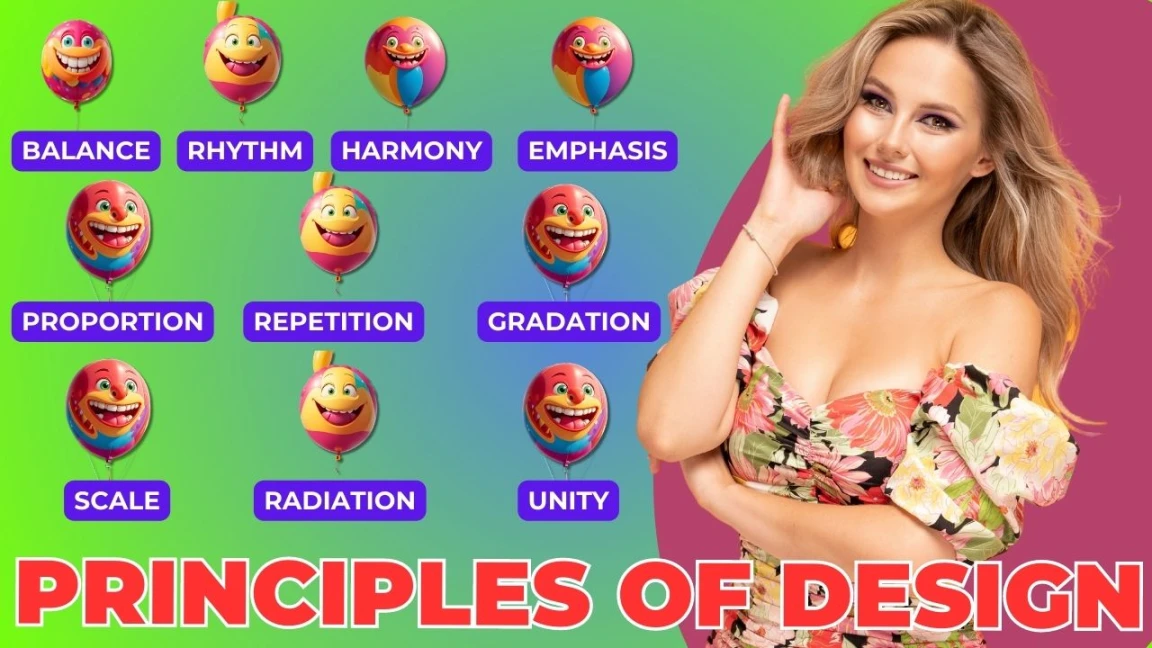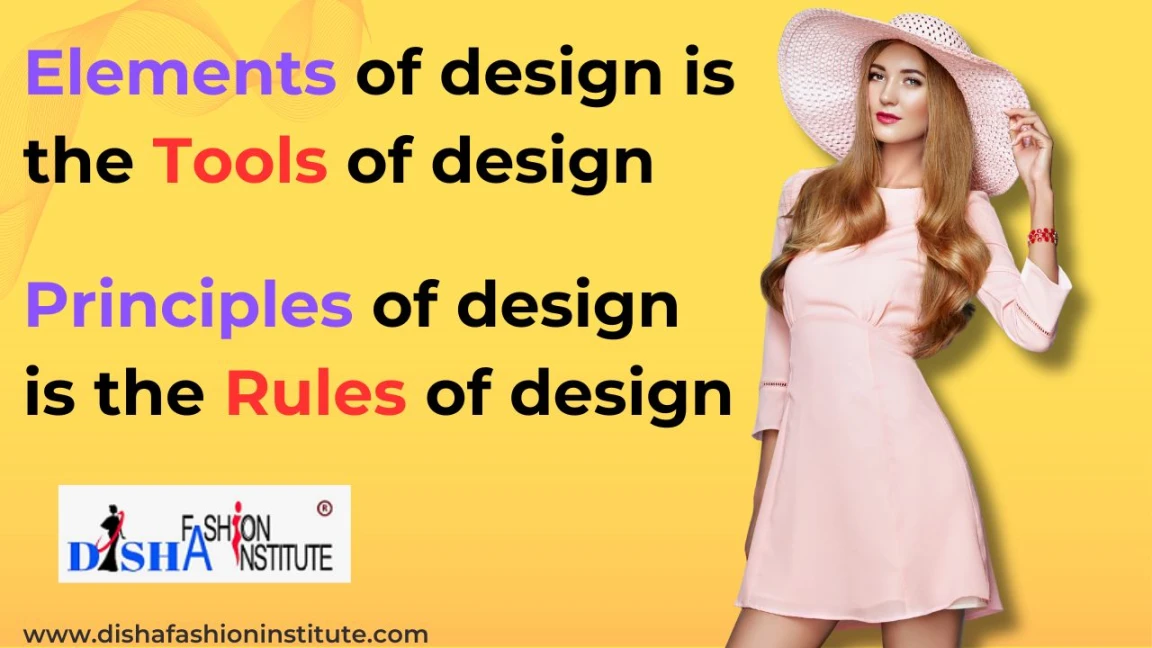
Wearing clothes primarily aims for protection, keeping warm, and modesty. However, people also wear different clothes for different occasions and identities. They also choose clothes by following their aesthetic sense, mood, and fashion trend.
Understanding and applying these principles is essential for any fashion designer who wants to create aesthetically pleasing and functional garments. In this article, we will learn about each of these principles, examining how they are used to create stunning garments.
Table of Content
- #1 Principles of Design: Balance in Fashion
- #2 Principles of Design: Proportion in Fashion
- #3 Principles of Design: Rhythm in Fashion
- #4 Principles of Design: Emphasis in Fashion
- #5 Principles of Design: Harmony in Fashion
- #6 Principles of Design: Radiation in Fashion
- #7 Principles of Design: Gradation in Fashion
- #8 Principles of Design: Unity in Fashion
- #9 Principles in Design: Repitition in Fashion
- #10 Principles of Design: Scale in Fashion
- Conclusion
- Explore Free Courses
- Join Fashion Designing Course
#1 Principles of Design: Balance in Fashion
One of the essential principles of design balance in fashion refers to the visual distribution of elements within a design. It creates a sense of equity, stability. When the design elements are in balanced way, a pleasing harmony is pleased to the eyes. Balance in garments refers to a visual distribution of weight, from a central area.
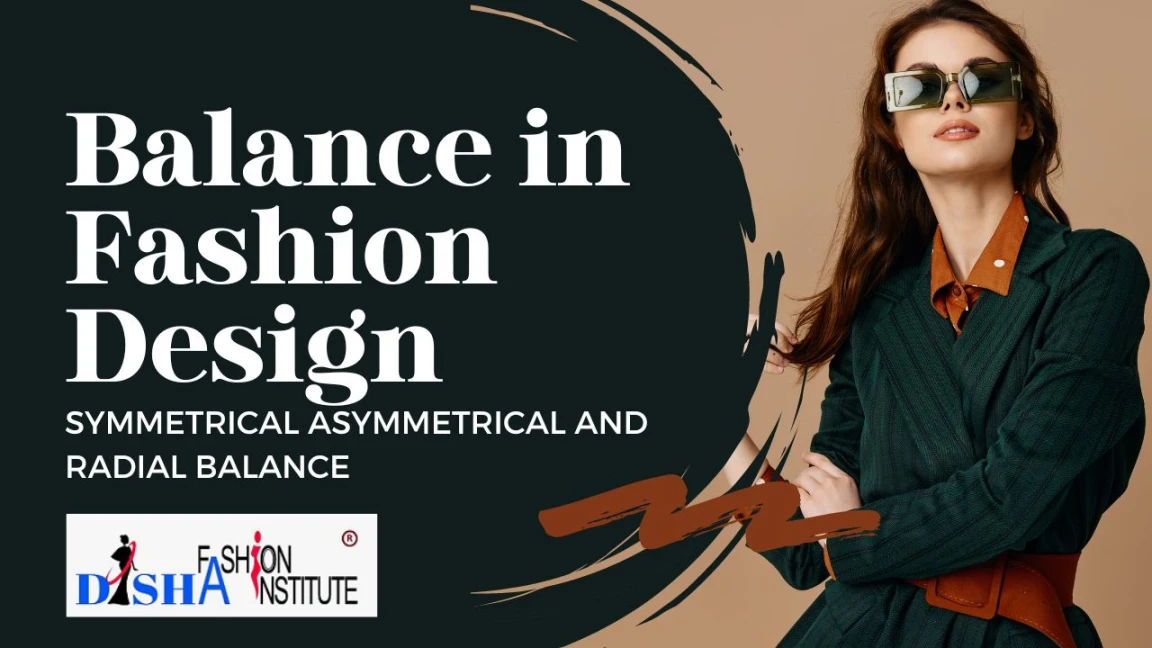
Read our detailed blog post on principles of design balance in fashion.
Principles of Design Balance in Fashion
#2 Principles of Design: Proportion in Fashion
Proportion is another key principle of fashion design that refers to the relationship between different parts of a design. Proportion is about ensuring that the size and shape of each element of a garment are visually balanced and harmonious with the other elements.

Read our detailed blogpost on proportion in fashion.
Principles of Design Proportion in Fashion
#3 Principles of Design: Rhythm in Fashion
Rhythm is another important principle of fashion design that refers to the visual flow of a garment. Rhythm is created by repeating design elements in a regular pattern, creating a sense of movement and visual interest. To create it lines, shapes, colours or textures are arranged in such a sequence that a sense of harmony and balance is created in the viewer’s eye.
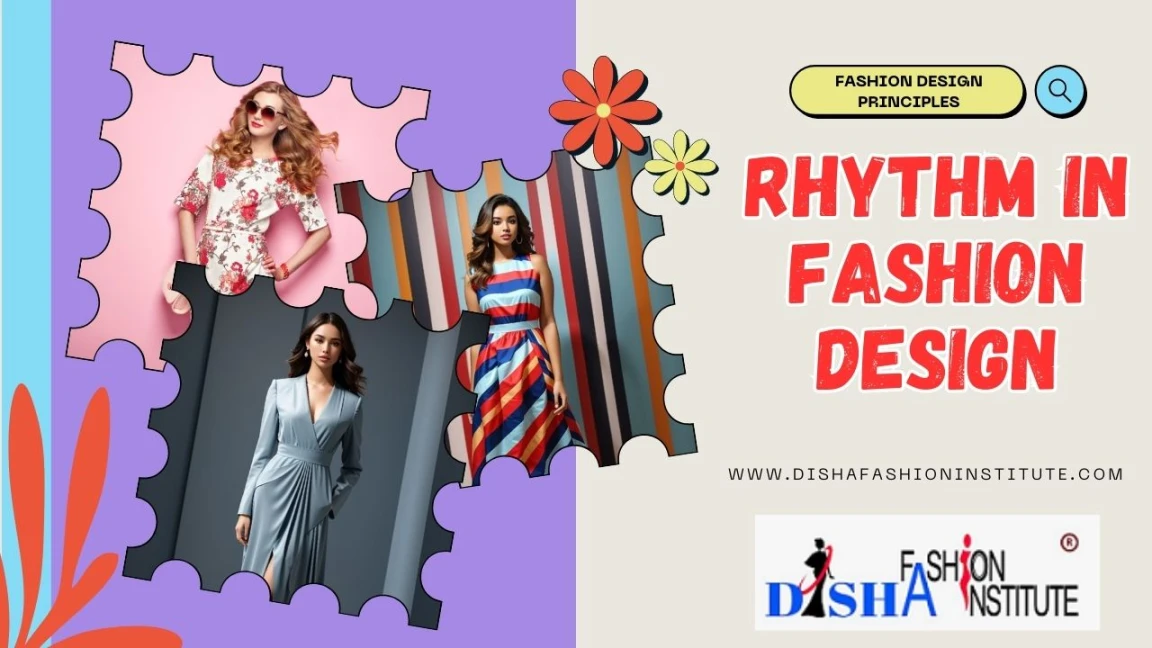
Read our detailed blogpost on rhythm in fashion.
Principles of Design Rhythm in Fashion
#4 Principles of Design: Emphasis in Fashion
Emphasis is one of the key principles of fashion design that helps in drawing attention to a specific area of a garment. Emphasis is often used to highlight the most important aspect of a design that draws attention. This can be achieved through the use of colour, texture, pattern, shape or any combination of these elements.
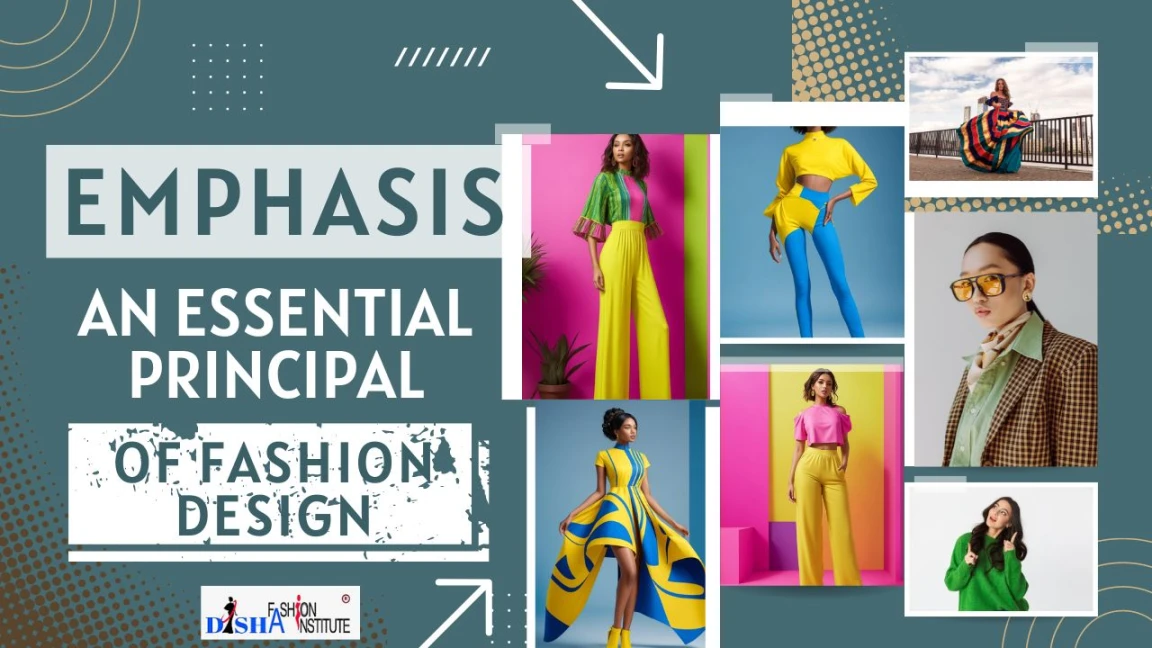
Read our detailed blogpost on emphasis in fashion.
Principles of Design Emphasis in Fashion
#5 Principles of Design: Harmony in Fashion
Harmony is a principle of fashion design that refers to the overall unity and coherence of a garment. A harmonious design is one that is visually pleasing and balanced, with all the design elements working together in a cohesive way. When a dress has visual unity, the relationship among all parts within a whole design, a soothing effect is created in viewer’s eye. Harmony can be achieved in many ways. For example, designers might use a monochromatic colour scheme or a limited colour palatte to create a harmonious look.

Read our detailed blogpost on harmony in fashion.
Principles of Design Harmony in Fashion
#6 Principles of Design: Radiation in Fashion
Radiation in the realm of fashion involves employing design lines that extend outward from a central focal point. This technique draws inspiration from the sunburst effect, where the viewer's gaze naturally travels from the central hub of the sunburst towards the surrounding regions of the design. Just as the rays of the sun emanate in various directions, the design lines radiate outward, creating a dynamic and visually engaging effect. This approach can effectively guide the viewer's attention and contribute to a sense of energy and movement within the overall design.
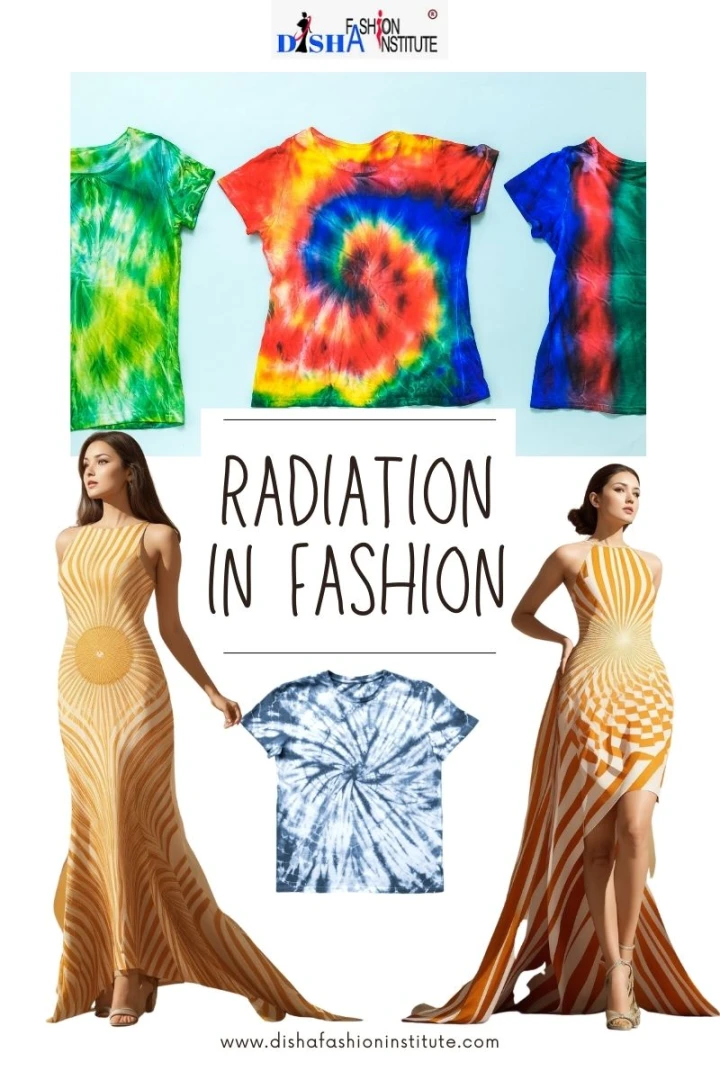
We have delved more into radiation in our blog post on rhythm in fashion.
#7 Principles of Design: Gradation in Fashion
Gradation in fashion involves using one colour, shape, size, design detail, or motif in a specific pattern. This pattern can transition from the darkest shade to the lightest or from the smallest size to the largest, creating a pleasing flow. When you look at a design with gradation, your eyes naturally move from the darkest part to the lightest part or the other way around, which makes the whole design catch your attention.
For example, a designer might use a particular shape for accessories in different sizes. The gradual change in sizes or shapes directs your gaze from one size to another, eventually leading your eyes to take in the entire piece of clothing. This technique adds a sense of rhythm and movement to the design, making it visually exciting and engaging.
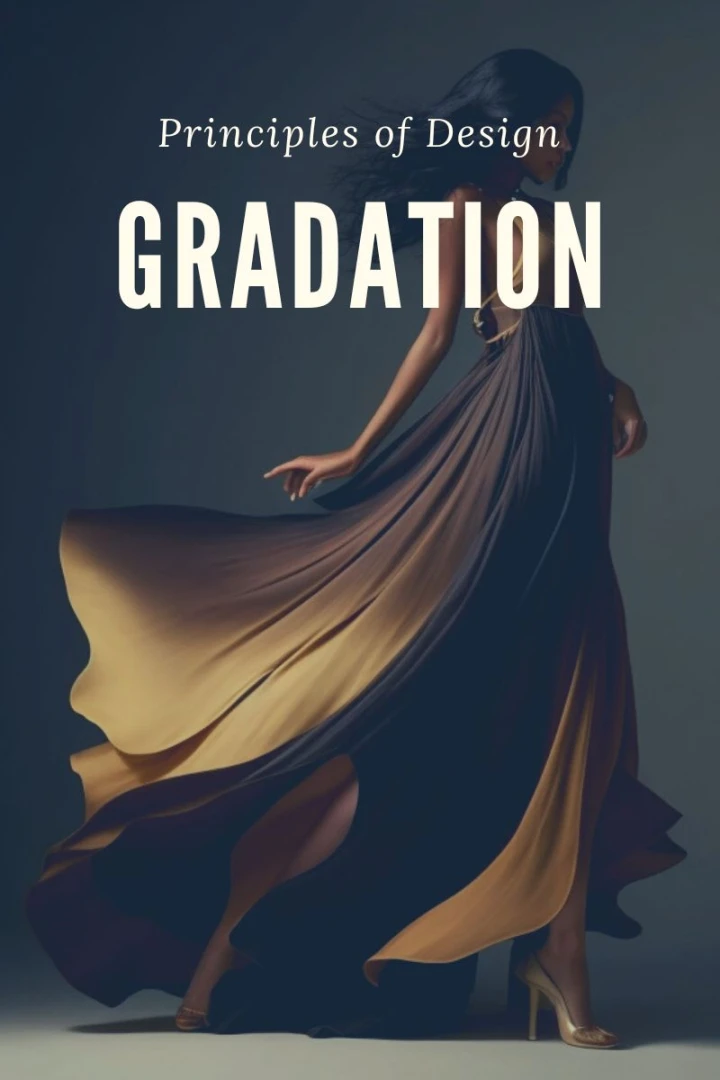
We have delved more into gradation in our blogpost on rhythm in fashion.
#8 Principles of Design: Unity in Fashion
Unity in fashion design is achieved by repeating a specific design element throughout a garment. This repetition brings about a sense of harmony and cohesion. On the other hand, when a garment incorporates an excessive number of different motifs, it can appear chaotic and lacking in harmony.
When a garment possesses unity, its distinct parts come together seamlessly, forming a complete and harmonious whole. This cohesive arrangement imparts a feeling of togetherness and coherence to the overall design, creating a sense of oneness that's visually appealing and satisfying.
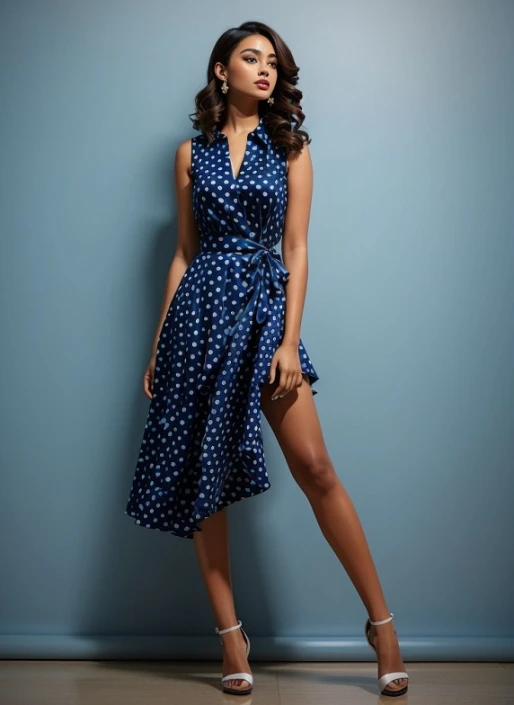
The unity and harmony sometimes referred to the same design concept. But these are not actually the same. We have delved more into unity in our blogpost on harmony in fashion design.
#9 Principles in Design: Repitition in Fashion
Repetition in fashion design involves repeatedly using certain design elements, details, or trims within a garment. This could mean featuring a particular aspect either consistently or more irregularly. This technique of multiple recurrences establishes a sense of cohesiveness in a design.
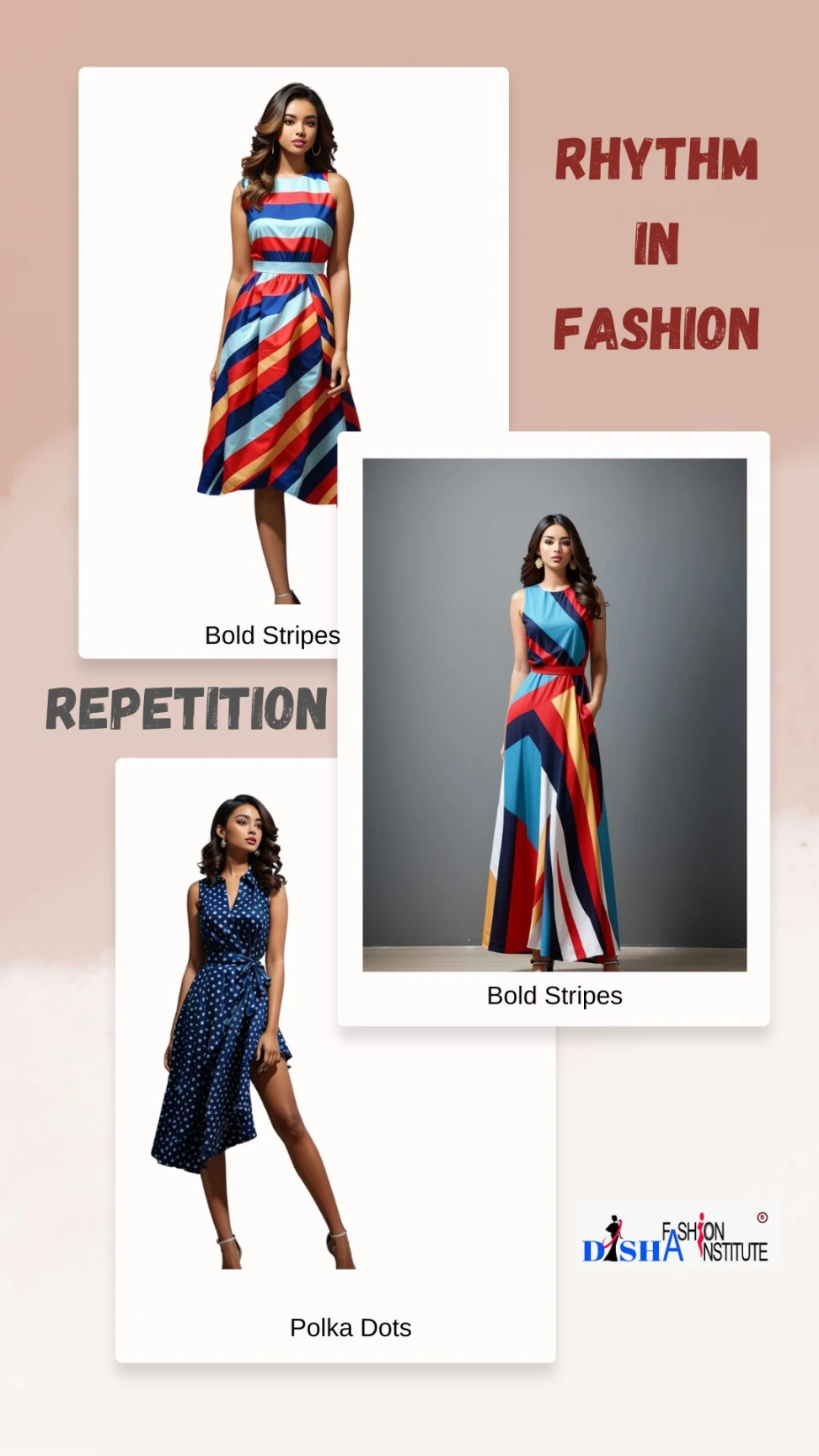
In essence, repetition introduces a dynamic sense of movement. It's a crucial tool for generating interest in a design and upholding its core theme. Achieving repetition in design can be accomplished through the recurrence of shapes, lines, and colours. For instance, a rhythmic flow of lines and shapes is created by repeating design elements like pleats, gathers, tucks, or buttons. You might notice a garment's dominant line, shape, colour, or detail being replicated with slight variations elsewhere.
Repetition emerges as an exceptionally valuable principle when considering thematic design. The recurrence of a particular shape, line, or detail within a design helps weave the theme consistently throughout an entire collection. For example, if soft gathers are elegantly situated at the neckline, they could also be echoed at the cuffs, thus establishing a unified thread that connects various pieces within the collection.
We have delved more into repetition in our blog post on rhythm in fashion.
#10 Principles of Design: Scale in Fashion
In the world of fashion design, "proportion" and "scale" are often used interchangeably, but in truth, they bear distinct meanings. Scale primarily pertains to the size relationship between two separate objects. On the other hand, proportion delves into the comparison of various components within a single object.
Conclusion
In closing, the world of fashion design is guided by fundamental principles that shape every garment's allure and functionality. Balance, proportion, rhythm, emphasis, and harmony unite to create visually captivating pieces. Embracing principles like radiation, gradation, unity, and repetition infuses designs with energy, movement, and cohesion.
Explore Free Courses
Begin your fashion journey with our free fashion design foundation course. Dive into the world of style and creation today!
Fashion Designing Foundation Course
Join Fashion Designing Course
Enrol in our certificate courses for fashion designing and textile designing

